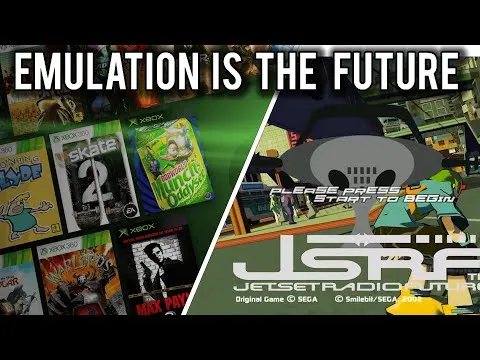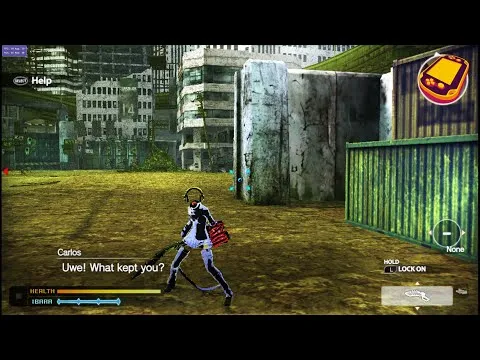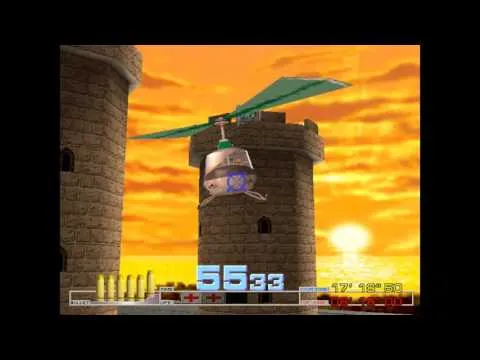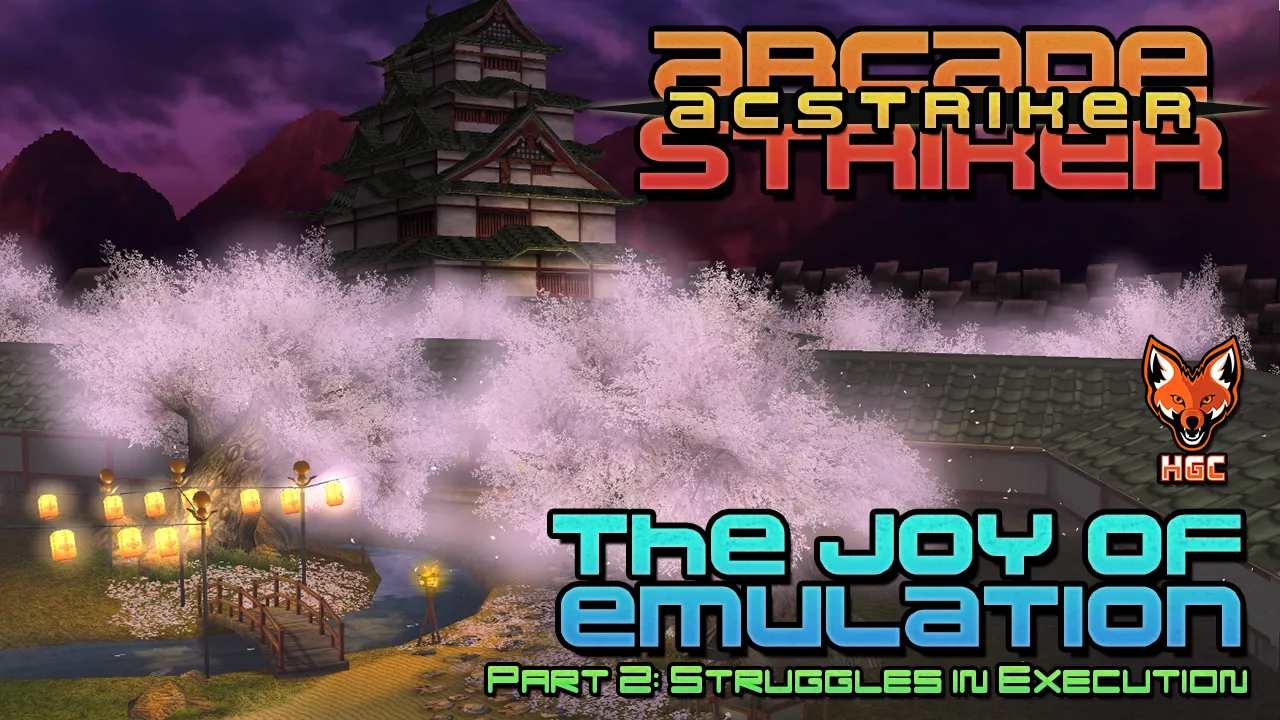

This is a continuation of the previous "The Joy of Emulation - Part 1" post (originally intended to be a single huge post), so if you haven't read it, make sure that you do so that you understand the context and then read this one :)
- Links to the five interviews (sources of the quotes that will be used) are avaliable below; huge thanks to these emulator developers for having given me the chance to interview them two years ago and providing these valuable insights on this process:
- MetalliC - DEMUL emulator (SEGA Dreamcast, NAOMI, NAOMI 2) developer - Interview from May 30, 2020
- Luke Usher - Cxbx-Reloaded emulator (Original Xbox) developer - Interview from April 30, 2020
- skmp and ZNullptr - NullDC and Reicast emulator (SEGA Dreamcast, NAOMI) developers - Interview from April 17, 2020
- JMC47 - Dolphin emulator (Nintendo Gamecube, Wii) Progress Report Writer and Netplay Contributor - Interview from July 07, 2020
- LuigiBlood - Nintendo 64DD and Satellaview Researcher; helped contribute support for these in specific emulators - Interview from May 25, 2020
The Struggles in Execution
However, while it might be easy to say "just emulate it" for both trying to play a certain game on your own, or wanting a developer/publisher to re-release a specific game...not only developing emulators is something that takes a lot of time, resources and insight on the original hardware, but also, some pieces of hardware are infamously difficult to emulate properly or even at all. One of the most widespread examples is the Nintendo 64, which while at surface level it might seem that most games look perfectly fine, some games used framebuffer effects which were broken in the older but faster plugins (and can be emulated properly with the newest plugins like GlideN64 and ParaLLEl...but require a faster PC)...but it doesn't end up being THAT much of a pain, as basically almost every game is playable with a toaster or a monster rig, so N64 emulation is definitely in a good place now contary to what some might be thinking.
Spread the word that N64 emulation is not THAT bad.
lol
LuigiBlood
The reason why I mention that some of these consoles had infamy on how approaching emulation for them was pretty tough is because that's the pivotal point on why emulating these games from the 90s and 2000s for re-releases today is absolutely not a trivial task. For example, the Nintendo 64 emulation in Nintendo Switch Online's Expansion Pack had a notable issue with fog in Zelda Ocarina of Time, and while this definitely could have been handled better at launch, it is a mistake that early N64 emulators and plugins stumbled with as well. From what I've heard, PS2 digital re-releases in PS3 (not using hardware backward compatibility only avaliable in the PS3 Fat model) also had noticeable input delay as well, and the PS2 also is considered an annoyingly complex console to emulate.
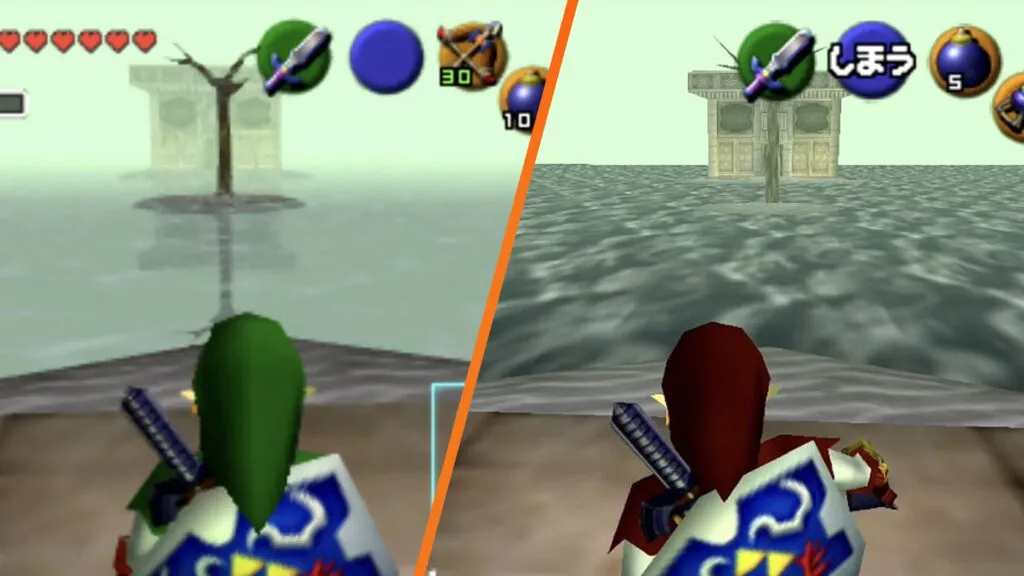
In any case, this is not a justification of any attempts that come out as half-hearted...but more like a point about how companies have a lot of struggles just to get emulation working for some of these platforms...on consoles. Of course you can say that PS2, Xbox, Saturn emulators and such exist on PC...but the tricky part comes when needing to have those games avaliable in your consoles as well. This is why X360's backward compatibility with Xbox games was limited, and how both Xbox One and Series X back compat for not just the original Xbox, but also for Xbox 360 games eventually stopped receiving games as well.
While it is definitely possible in some cases as independent developers have shown with their constant amount of surprises with awesome emulators, for companies its an investment that requires a reasonable timeframe (unlike these free emulators that will take as much as they need to improve), the right talent and the money to pay it...which is a pretty risky combination for most companies to take. Oh, and that would be for companies with backward compatibility intentions for consoles as well, since other game publishers would also need a justification for bothering with that much work for "just an old game" after all.
On that note, while the technical aspects of emulation can always be a recurrent issue to deal with, designing an intuitive interface as well as the control mapping from and for different kinds of controllers is another hurdle for the progress of emulation, both for standalone emus regarding the end user, and even official compilations/services regarding how they implement the menus, filters, offering control mapping options, input latency...however it shouldn't be understated that developing an emulator is still quite difficult and time consuming. It doesn't excuse that companies put out half-hearted emulation efforts, but those bad apples are examples about how things can easily go wrong if not handled with enough care and testing.
[...] Watching someone casually read through PPC ASM and tell me what the game is doing based on a screenshot from the debugger is wild. A lot of the people I’ve seen come and go in the Dolphin community and other emulation communities are really beyond comprehension for me. They’re very cerebral is what I’d say.
I think that’s just coding in general, it really takes something special to be able to do it at a high level, and when you add in the knowledge and expertise to reverse engineer hardware and games, you get some very special people. I don’t even know how to describe it, it’s like another plane of thinking. Some of the conversations I’ve been able to observe are crazy.
JMC47
You might have as well used any emulator from the internet to play some classic games on your computer or phone, so we should know that emulation is very useful to play many kinds of older games...but in any case, considering all that has been said, emulation development is something that I consider that always should be commended because of the really tough effort that is figuring a console inside-out in the first place, and then making a program that can interpret everything that a software designed for it work in an entirely different piece of hardware. Because its not just about "oh hey it can run these games", but more about getting to recreate the hardware so that the software can run on it...which is how the games end up working there.
I must stress though that we don’t work on specific games, rather, we try to work out what the correct behaviour would be on a real Xbox, and if we replicate that well, games eventually start to work.
Traditional emulators work by simulating the hardware of the system they’re emulating: they usually emulate the processor, the graphics hardware, the sound hardware, and everything else, as far as the games are concerned, they are running on the original console.
Luke Usher
And this is not even saying anything about the optimization of performance, because its not simply getting to do a thing that can simulate the steps from another hardware, but that it also can do so under acceptable speeds. Sometimes it ends up with a demanding amount of requeriments that are inevitable just from the task at hand, but generally there's always an aim for optimization in order to have better speeds in a wider variety of hardware. The way this is achieved can depend of the scope of the emulator: It can be designed for accuracy or speed, and emulation can be Low-Level Emulation (trying to get the hardware as closely emulated and optimizing from there) or High-Level Emulation (making sacrifices or giving less priority to accuracy for functionality and speed).
And one of the emulators I've mentioning here, Cxbx-Reloaded, is not even a "traditional emulator" simulating all of the hardware, but more like translating whatever the game calls for into something compatible for Windows, thanks to the similarities between Xbox and computers, both in hardware and software (though this doesn't make it any easier, since compatibility is hit-or-miss due to this approach).
Cxbx-Reloaded is completely different, in fact, it might be incorrect to call Cxbx-Reloaded an emulator, it’s probably more correct to refer to it as a compatibility layer. Cxbx-Reloaded does not emulate an Xbox, nor it doesn’t emulate the Xbox hardware. Instead, it loads Xbox games into a Windows process, locates all the Xbox specific functions, and patches the games to use our own versions of those functions, (mostly) avoiding the need to actually emulate the Xbox hardware.
If there are any folk around that are familiar with Wine, an application that allows Windows software to work on Linux, Cxbx-Reloaded is almost the same kind of thing, but for running Xbox games on Windows. Cxbx-Reloaded lets you play Xbox games on your PC, but not by emulating the Xbox hardware, instead, it emulates the software environment.
[...] Performance is excellent in many games, on even low-end hardware, we’ve seen games running at much greater than full-speed. I’ve seen over 1000 fps in simple scenes myself. Sadly, there are also games that struggle even on the best computers. Cxbx-Reloaded is still pretty slow in a lot of areas, many of which are to do with fundamental differences between Xbox and PC architecture.
Luke Usher
[...] Back to the [Dolphin] 3.0, 3.5, 4.0 days [...] Dolphin was trying to make the transition from a really hacky, fast emulator to a more accurate performance oriented emulator. But that meant losing performance in some areas for a more accurate emulation core. That doesn’t mean Dolphin is perfect, it’s actually very bad in some areas, but by making the emulator more maintainable and removing a lot of complexity and dead features, it allowed development to have a much longer lifespan.
JMC47
While the technical aspects of emulation can always be a recurrent issue to deal with, designing an intuitive interface as well as the control mapping from and for different kinds of controllers is another hurdle for the progress of emulation, both for standalone emus regarding the end user, and even official compilations/services regarding how they implement the menus, filters, offering control mapping options, and even a simple yet very important detail that's noticeable when it's not handled right: Input latency.
For example, the N64 games in the NSO's Expansion Pack service suffered from lack of button remapping for more comfortable controls AND high input latency, which in some games definitely felt off. If you don't see yet why that would be important, just try playing a racing or puzzle game with input lag, or use the offline input lag options that some fighting games provide as a way to train with ONLINE input lag (which is a different can of worms, one that I talked months ago but I'd be surprised if someone remembers), you'll get that input lag can be absolutely offputting in the wrong context; specially if it could be avoided through some extra work put in by the developers.
And despite years of effort overall, emulation can still have long ways to go with certain platforms, not only from the popular consoles that do have some hiccups with specific games (RPCS3 for PS3, Xenia for Xbox 360, Cxbx-Reloaded and XEMU for Xbox, Yuzu and Ryujinx for Switch, CEMU for Wii U, and even PCSX2 for PS2 to an extent), but also for some obscure ones that can go from lacking certain features like wireless connection and specific peripherals support (MelonDS still has an unstable Local Wi-fi feature, and Duckstation does not implement the rare Link Cable, which is only supported in two older PS1 emulators), to most games still having artifacts or sound issues that will need way more time to polish due to the emulator's early progress.
Most notably, Vita3K has been making good progress this year...but games still look rough overall, and even the legendary MAME project still has a huge amount of obscure and known games that either have visual or sound issues (Hyper NeoGeo 64 games), have gameplay issues that interfere in the gameplay or even make the game impossible to complete (Virtua Fighter in MAME still has collision issues, and Time Crisis used to be impossible to complete years ago), to games that straight up are broken because of protection, unfinished support for the hardware, or simply because of how even if the game should be technically playable at that point...it runs too slow for that to be the case.
Hey there! I actually intended this to be a single huge, three-section post talking about this topic. But I actually ended up getting an error when trying to publish it several times, which from what I saw from a post...can only be solved by splitting the content down. Here's the thing that I'm talking about, with the date where I had to do the split, the original draft...and the total word count (between both the english and translated to spanish sections).
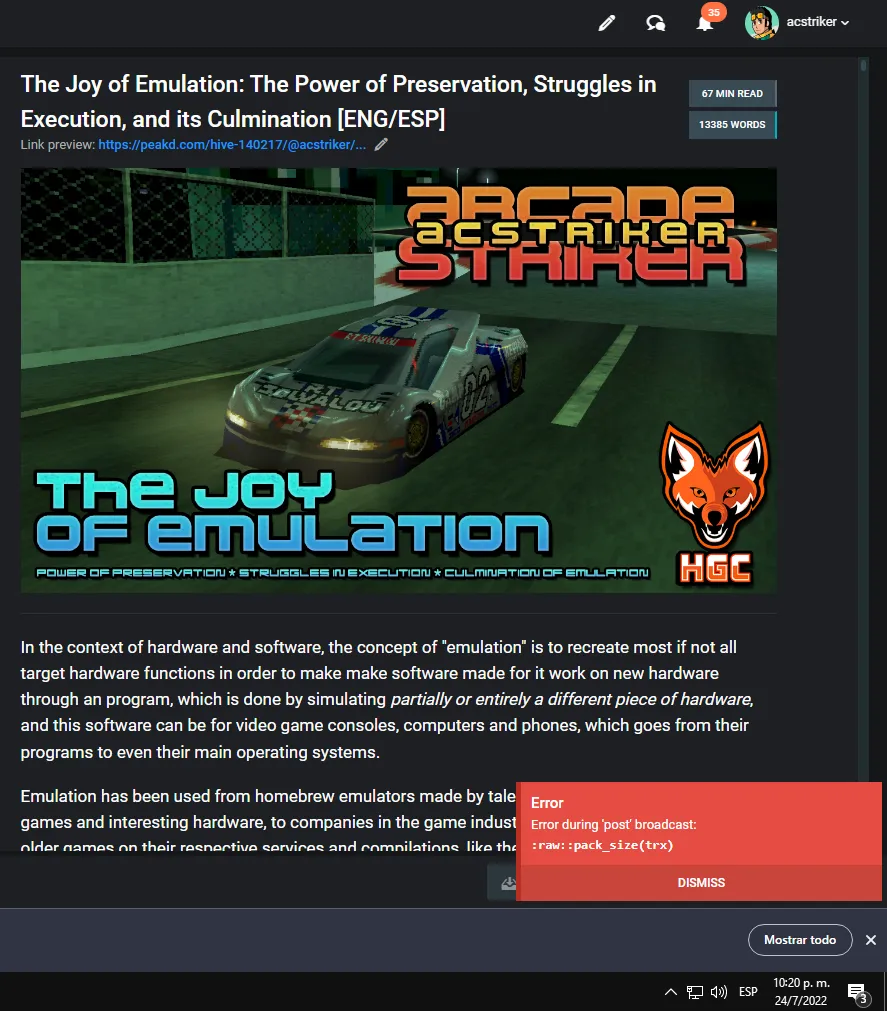
So yeah. This was not the way I intended to release this huge beast, but at least it still can work out as I post the other two sections of this huge piece in the following two days. I would really appreciate it as well that you support the following sections if you really liked this one, since it all was intended to be one piece...just like how Sonic 3 and Sonic & Knuckles were supposed to be all part of one huge game, but split before release.
super bonus bonus - today's bonus image
The nice night castle you saw at the cover image? That's from Tatsunoko VS Capcom Ultimate All Stars, good old Daigo Temple (which is based off Ryu's stage in Street Fighter 2). Its a nice little game! It has been stuck for the Wii ever since it got released, but of course you can play it again in high-resolution (and netplay, though only delay-based netcode) thanks to the Dolphin emulator. I took both screenshots using the emulator's free camera hack...and I will definitely be talking about all the extra benefits and tools that emulation can provide in the next part. Stay tuned!
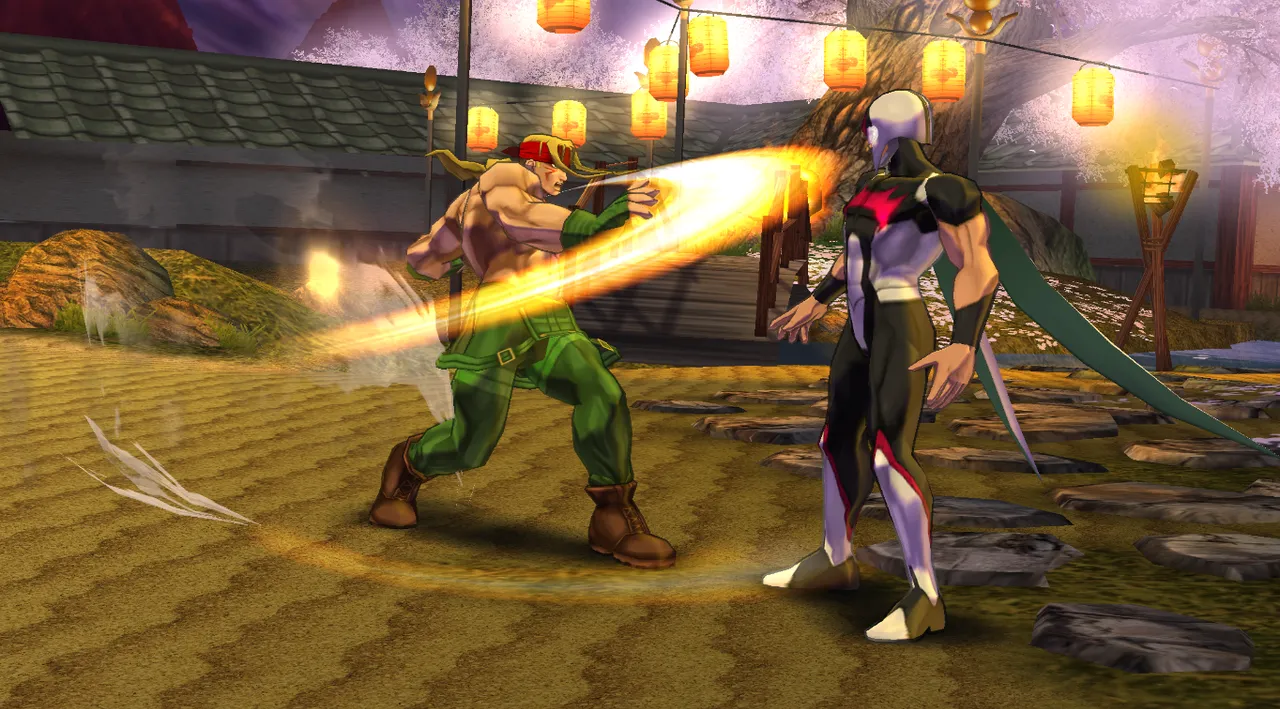

Spanish translation with DeepL. All screenshots were captured by myself.
Español

Esta es una continuación del anterior post "La alegría de la emulación - Parte 1" (que originalmente iba a ser un único y enorme post), así que si no lo has leído, asegúrate de hacerlo para que entiendas el contexto y luego lee este :)
- Los enlaces a las cinco entrevistas (fuentes de las citas que se utilizarán) están disponibles a continuación; muchas gracias a estos desarrolladores de emuladores por haberme dado la oportunidad de entrevistarlos hace dos años y por proporcionarme estas valiosas palabras sobre el proceso de desarrollo:
- MetalliC - Desarrollador del emulador DEMUL (SEGA Dreamcast, NAOMI, NAOMI 2) - Entrevista del 30 de mayo de 2020
- Luke Usher - Desarrollador del emulador Cxbx-Reloaded (Xbox original) - Entrevista del 30 de abril de 2020
- skmp y ZNullptr - Desarrolladores del emulador NullDC y Reicast (SEGA Dreamcast, NAOMI) - Entrevista del 17 de abril de 2020
- JMC47 - Escritor de informes de progreso y colaborador de Netplay del emulador Dolphin (Nintendo Gamecube, Wii) - Entrevista del 07 de julio de 2020
- LuigiBlood - Investigador de Nintendo 64DD y Satellaview; ayudó a contribuir al soporte de estos en emuladores específicos - Entrevista del 25 de mayo de 2020
Los Obstáculos en la Ejecución
Sin embargo, aunque sea fácil decir "simplemente emúlalo" tanto para intentar jugar a un determinado juego por tu cuenta, como para querer que un desarrollador/editor vuelva a lanzar un juego específico... no sólo el desarrollo de emuladores es algo que requiere mucho tiempo, recursos y conocimiento del hardware original, sino que además, algunas piezas de hardware son infamemente difíciles de emular correctamente o incluso en absoluto. Uno de los ejemplos más extendidos es la Nintendo 64, que si bien a nivel superficial podría parecer que la mayoría de los juegos se ven perfectamente bien, algunos juegos utilizaban efectos de framebuffer que se rompían en los plugins más antiguos pero más rápidos (y se pueden emular correctamente con los plugins más nuevos como GlideN64 y ParaLLEl. ...pero requieren un PC más rápido)...pero no acaba siendo tan molesto, ya que básicamente casi todos los juegos son jugables con una tostadora o un equipo monstruoso, así que la emulación de N64 está definitivamente en un buen lugar ahora, a diferencia de lo que algunos podrían estar pensando.
Haz correr la voz de que la emulación de N64 no es TAN mala.
lol
LuigiBlood
La razón por la que menciono que algunas de estas consolas tenían la infamia de que acercarse a la emulación para ellas era bastante difícil es porque ese es el punto central de por qué emular estos juegos de los 90 y 2000 para las reediciones de hoy no es en absoluto una tarea trivial. Por ejemplo, la emulación de Nintendo 64 en el Pack de Expansión de Nintendo Switch Online tenía un problema notable con la niebla en Zelda Ocarina of Time, y aunque esto definitivamente podría haberse manejado mejor en el lanzamiento, es un error con el que los primeros emuladores y plugins de N64 también tropezaron. Por lo que he oído, las reediciones digitales de PS2 en PS3 (que no utilizaban la retrocompatibilidad de hardware sólo disponible en el modelo PS3 Fat) también tenían un notable retraso de entrada, y la PS2 también se considera una consola molesta y compleja de emular.

En cualquier caso, esto no es una justificación de los intentos que salen a medias... sino más bien un punto sobre cómo las compañías tienen muchas luchas sólo para conseguir que la emulación funcione para algunas de estas plataformas... en consolas. Por supuesto que se puede decir que los emuladores de PS2, Xbox, Saturn y demás existen en PC...pero la parte complicada viene cuando se necesita tener esos juegos disponibles en las consolas también. Esta es la razón por la que la retrocompatibilidad de X360 con los juegos de Xbox era limitada, y cómo la retrocompatibilidad de Xbox One y Series X, no sólo para la Xbox original, sino también para los juegos de Xbox 360, finalmente dejó de recibir juegos también.
Aunque definitivamente es posible en algunos casos, como han demostrado los desarrolladores independientes con su constante cantidad de sorpresas con emuladores increíbles, para las empresas es una inversión que requiere un plazo razonable (a diferencia de estos emuladores gratuitos que tardarán todo lo que necesiten en mejorar), el talento adecuado y el dinero para pagarlo... lo cual es una combinación bastante arriesgada para la mayoría de las empresas. Ah, y eso sería también para las empresas con intenciones de retrocompatibilidad para consolas, ya que otros editores de juegos también necesitarían una justificación para molestarse con tanto trabajo por "sólo un juego antiguo", después de todo.
En este sentido, mientras que los aspectos técnicos de la emulación pueden ser siempre un problema recurrente, el diseño de una interfaz intuitiva, así como el mapeado de control desde y para diferentes tipos de mandos, es otro obstáculo para el progreso de la emulación, tanto para los emus independientes en lo que respecta al usuario final, como para las compilaciones/servicios oficiales en lo que respecta a cómo implementan los menús, los filtros, la oferta de opciones de mapeado de control, la latencia de entrada... Sin embargo, no hay que subestimar que el desarrollo de un emulador sigue siendo bastante difícil y requiere mucho tiempo. No es una excusa para que las empresas hagan esfuerzos de emulación a medias, pero esas manzanas podridas son ejemplos de cómo las cosas pueden salir mal fácilmente si no se manejan con suficiente cuidado y pruebas.
[...] Ver a alguien leer casualmente el ASM de PPC y decirme lo que hace el juego basándose en una captura de pantalla del depurador es una locura. Mucha de la gente que he visto ir y venir en la comunidad Dolphin y otras comunidades de emulación están realmente más allá de la comprensión para mí. Son muy cerebrales es lo que yo diría.
Creo que eso es sólo codificación en general, realmente se necesita algo especial para ser capaz de hacerlo a un alto nivel, y cuando se añade en el conocimiento y la experiencia para la ingeniería inversa de hardware y juegos, se obtiene algunas personas muy especiales. No sé ni cómo describirlo, es como otro plano de pensamiento. Algunas de las conversaciones que he podido observar son una locura.
JMC47
También puedes haber usado cualquier emulador de internet para jugar a algunos juegos clásicos en tu ordenador o teléfono, así que deberíamos saber que la emulación es muy útil para jugar a muchos tipos de juegos antiguos... pero en cualquier caso, teniendo en cuenta todo lo que se ha dicho, el desarrollo de la emulación es algo que considero que siempre debe ser elogiado por el esfuerzo realmente duro que supone averiguar una consola por dentro en primer lugar, y luego hacer que un programa que puede interpretar todo lo que un software diseñado para ella funcione en una pieza de hardware totalmente diferente. Porque no se trata sólo de "oh, hey, puede ejecutar estos juegos", sino más bien de conseguir recrear el hardware para que el software pueda funcionar en él... que es como los juegos acaban funcionando allí.
No obstante, debo subrayar que no trabajamos con juegos específicos, sino que intentamos averiguar cuál sería el comportamiento correcto en una Xbox real, y si lo reproducimos bien, los juegos acaban funcionando.
Los emuladores tradicionales funcionan simulando el hardware del sistema que emulan: suelen emular el procesador, el hardware gráfico, el hardware de sonido, y todo lo demás, en cuanto a los juegos, se ejecutan en la consola original.
Luke Usher
Y eso sin hablar de la optimización del rendimiento, porque no es simplemente llegar a hacer una cosa que pueda simular los pasos de otro hardware, sino que además pueda hacerlo bajo velocidades aceptables. A veces se termina con una cantidad exigente de requerimientos que son inevitables sólo por la tarea que se realiza, pero en general siempre hay un objetivo de optimización para tener mejores velocidades en una mayor variedad de hardware. La forma de conseguirlo puede depender del alcance del emulador: Puede estar diseñado para la precisión o para la velocidad, y la emulación puede ser de bajo nivel (intentando conseguir una emulación lo más cercana posible al hardware y optimizando a partir de ahí) o de alto nivel (haciendo sacrificios o dando menos prioridad a la precisión en favor de la funcionalidad y la velocidad).
Y uno de los emuladores que he mencionado aquí, Cxbx-Reloaded, ni siquiera es un "emulador tradicional" que simule todo el hardware, sino que más bien traduce lo que pide el juego en algo compatible para Windows, gracias a las similitudes entre la Xbox y los ordenadores, tanto en hardware como en software (aunque esto no lo hace más fácil, ya que la compatibilidad es de acierto o error debido a este enfoque).
Cxbx-Reloaded es completamente diferente, de hecho, podría ser incorrecto llamar a Cxbx-Reloaded un emulador, probablemente es más correcto referirse a él como una capa de compatibilidad. Cxbx-Reloaded no emula una Xbox, ni emula el hardware de la Xbox. En su lugar, carga los juegos de la Xbox en un proceso de Windows, localiza todas las funciones específicas de la Xbox y parchea los juegos para que utilicen nuestras propias versiones de esas funciones, evitando (en su mayoría) la necesidad de emular realmente el hardware de la Xbox.
Si hay alguien que conozca Wine, una aplicación que permite que el software de Windows funcione en Linux, Cxbx-Reloaded es casi lo mismo, pero para ejecutar juegos de Xbox en Windows. Cxbx-Reloaded te permite jugar a juegos de Xbox en tu PC, pero no emulando el hardware de Xbox, sino emulando el entorno de software.
[...] El rendimiento es excelente en muchos juegos, incluso en hardware de gama baja, hemos visto juegos que se ejecutan a una velocidad muy superior a la máxima. Yo mismo he visto más de 1000 fps en escenas sencillas. Por desgracia, también hay juegos que tienen dificultades incluso en los mejores ordenadores. Cxbx-Reloaded sigue siendo bastante lento en muchos aspectos, muchos de los cuales tienen que ver con las diferencias fundamentales entre la arquitectura de Xbox y la de PC.
Luke Usher
[...] Volviendo a los días de [Dolphin] 3.0, 3.5, 4.0 [...] Dolphin estaba tratando de hacer la transición de un emulador rápido y realmente complicado a un emulador más preciso orientado al rendimiento. Pero eso significaba perder rendimiento en algunas áreas por un núcleo de emulación más preciso. Eso no significa que Dolphin sea perfecto, de hecho es muy malo en algunas áreas, pero al hacer el emulador más mantenible y eliminar mucha complejidad y características muertas, permitió que el desarrollo tuviera una vida útil mucho más larga.
JMC47
Mientras que los aspectos técnicos de la emulación pueden ser siempre un problema recurrente a tratar, el diseño de una interfaz intuitiva así como el mapeado de control desde y para diferentes tipos de mandos es otro obstáculo para el progreso de la emulación, tanto para los emus independientes en lo que respecta al usuario final, como incluso las compilaciones/servicios oficiales en lo que respecta a cómo implementan los menús, filtros, ofreciendo opciones de mapeado de control, e incluso un detalle simple pero muy importante que se nota cuando no se maneja bien: la latencia de entrada.
Por ejemplo, los juegos de N64 del servicio Expansion Pack de la NSO adolecían de falta de reasignación de botones para conseguir controles más cómodos Y de una alta latencia de entrada, que en algunos juegos se notaba definitivamente. Si aún no ves por qué esto es importante, intenta jugar a un juego de carreras o de puzzle con input lag, o utiliza las opciones de input lag offline que ofrecen algunos juegos de lucha como forma de entrenar con input lag ONLINE (que es un tema diferente, del que hablé hace meses pero me sorprendería que alguien se acordara), entenderás que el input lag puede ser absolutamente desagradable en el contexto equivocado; especialmente si se pudiera evitar con algo de trabajo extra por parte de los desarrolladores.
Y a pesar de los años de esfuerzo en general, la emulación todavía puede tener un largo camino por recorrer con ciertas plataformas, no sólo de las consolas populares que tienen algunos contratiempos con juegos específicos (RPCS3 para PS3, Xenia para Xbox 360, Cxbx-Reloaded y XEMU para Xbox, Yuzu y Ryujinx para Switch, CEMU para Wii U, e incluso PCSX2 para PS2 hasta cierto punto), pero también para algunos oscuros que pueden ir desde la falta de ciertas características como la conexión inalámbrica y el soporte de periféricos específicos (MelonDS todavía tiene una función Wi-fi local inestable, y Duckstation no implementa el raro cable de enlace, que sólo es compatible con dos emuladores de PS1 más antiguos), hasta la mayoría de los juegos que todavía tienen artefactos o problemas de sonido que necesitarán mucho más tiempo para pulir debido al progreso temprano del emulador.
En particular, Vita3K ha progresado mucho este año... pero los juegos siguen teniendo un aspecto tosco en general, e incluso el legendario proyecto MAME sigue teniendo una gran cantidad de juegos oscuros y conocidos que o bien tienen problemas visuales o de sonido (juegos de Hyper NeoGeo 64), tienen problemas de jugabilidad que interfieren en el juego o incluso hacen que el juego sea imposible de completar (Virtua Fighter en MAME sigue teniendo problemas de colisión, y Time Crisis solía ser imposible de completar hace años), hasta juegos que directamente están rotos debido a la protección, el soporte inacabado para el hardware, o simplemente porque aunque el juego debería ser técnicamente jugable en ese punto. ...se ejecuta demasiado lento para que ese sea el caso.
¡Hola! En realidad pretendía que esto fuera un único y enorme post de tres secciones hablando de este tema. Pero la verdad es que me ha acabado dando un error al intentar publicarlo varias veces, que por lo que he visto en un post... sólo se puede solucionar dividiendo el contenido hacia abajo. Aquí está el tema del que hablo, con la fecha en la que tuve que hacer la división, el borrador original... y el número total de palabras (entre las secciones en inglés y traducidas al español).

Así que sí. Esta no era la forma en la que pretendía publicar esta enorme bestia, pero al menos aún puede funcionar ya que en los próximos dos días publicaré las otras dos secciones de esta enorme obra. También agradecería que apoyen las siguientes secciones si realmente les ha gustado ésta, ya que la idea es que todo fuera una sola pieza... igual que Sonic 3 y Sonic & Knuckles se suponía que eran parte de un solo juego enorme, pero se dividió antes de su lanzamiento.
super bonus bonus - imagen bonus de hoy
¿El bonito castillo nocturno que has visto en la imagen de portada? Es de Tatsunoko VS Capcom Ultimate All Stars, el viejo templo de Daigo (basado en el escenario de Ryu en Street Fighter 2). Es un juego muy bonito. Desde que salió a la venta, se ha quedado atascado en la Wii, pero, por supuesto, puedes volver a jugarlo en alta resolución (y con netplay, aunque sólo con netcode basado en el retardo) gracias al emulador Dolphin. Hice las dos capturas de pantalla utilizando el hack de cámara gratuito del emulador... y en la próxima parte hablaré de todas las ventajas y herramientas adicionales que ofrece la emulación. ¡Esten atentos!


Traducción al español hecha con DeepL. Todas las fotos capturadas por mí.
